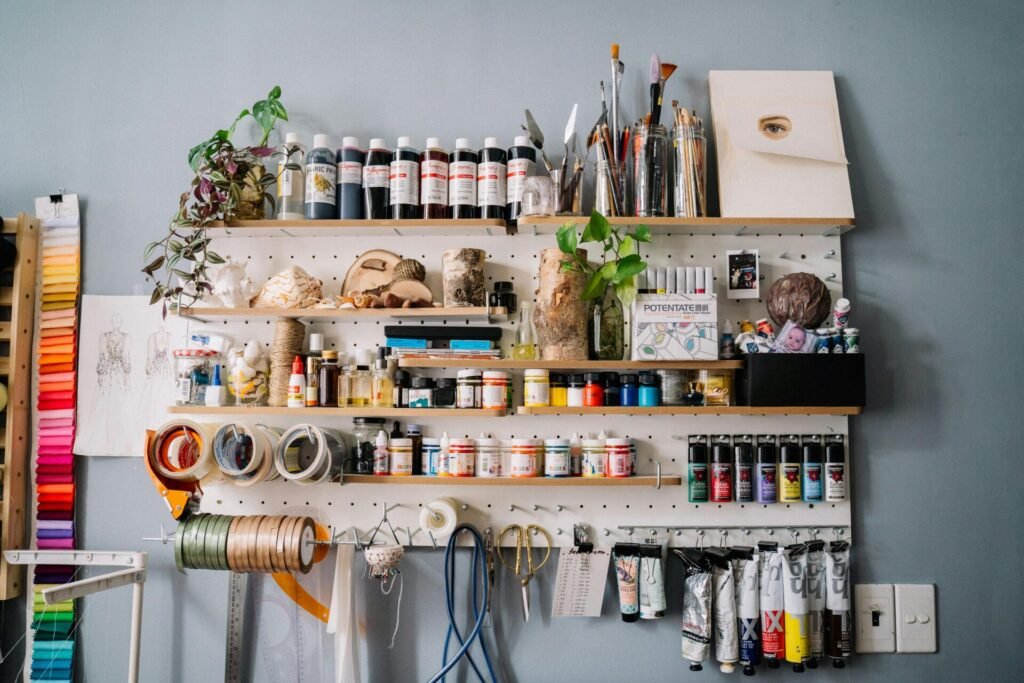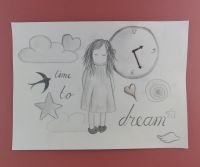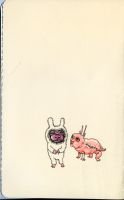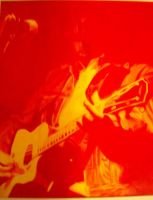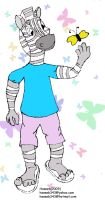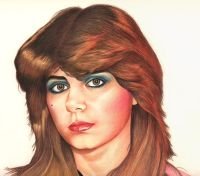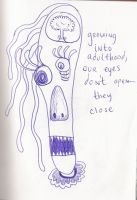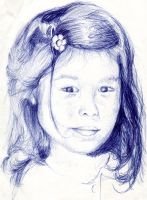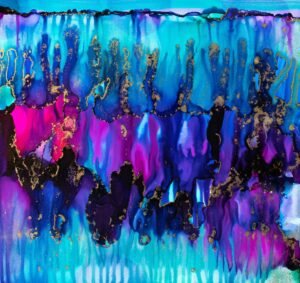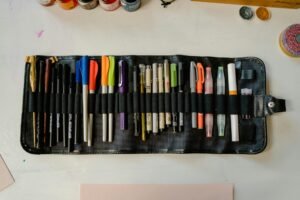A well-stocked sketchbook materials kit is the heartbeat of any artist’s creative practice. Whether you’re a seasoned illustrator, a casual doodler, or a mixed-media explorer, having the right sketchbook materials can elevate your work and unlock new possibilities. This ultimate guide breaks down the essential tools, optional enhancements, and creative extras that artists use to bring their sketchbooks to life. From graphite to gouache, collage to calligraphy, we’ll cover everything you need to build a versatile, inspiring setup.
Why Your Sketchbook Materials Matter
Your sketchbook is more than a surface—it’s a laboratory, a diary, and a playground. The materials you choose shape your style, influence your workflow, and determine how freely you can experiment. A thoughtfully curated kit:
- Encourages daily sketching habits
- Supports a range of techniques and media
- Enhances portability and ease of use
- Reflects your artistic identity and goals
Whether you sketch at home, in museums, or on the go, the right materials make the difference between frustration and flow.
Essential Sketchbook Materials Every Artist Should Have
Sketchbooks
Your sketchbook is the foundation. Choose based on paper weight, texture, binding, and intended media.
Hardcover Sketchbooks
Hardcover sketchbooks offer durability and protection, making them ideal for travel, plein air sketching, and daily use. Their rigid covers provide a stable surface for drawing on the go, while also shielding pages from wear and tear. Many hardcover options include elastic closures, ribbon bookmarks, and archival-quality paper, making them a favorite for artists who want a reliable, long-lasting sketchbook that can handle frequent handling and transport.
Spiral-Bound Sketchbooks
Spiral-bound sketchbooks are designed for ease of use, allowing pages to lay completely flat or fold back for single-handed sketching. This format is especially useful for double-page spreads, quick flipping, and working in tight spaces. Artists who prefer a flexible workflow—such as switching between portrait and landscape orientation—often favor spiral bindings for their adaptability and convenience.

Mixed-Media Sketchbooks
Mixed-media sketchbooks are built to handle a wide range of materials, from dry media like graphite and ink to wet applications like watercolor and acrylic. Their heavier paper weight (often 90–120 lb) resists warping and bleed-through, making them perfect for artists who enjoy layering techniques or combining collage, paint, and drawing. These sketchbooks are a versatile choice for experimentation and hybrid styles.
Watercolor Sketchbooks
Watercolor sketchbooks feature cold-pressed or rough-textured paper designed to absorb water and pigment without buckling. Their pages are typically thicker (140 lb or more), allowing for washes, gradients, and wet-on-wet techniques. Artists who work with watercolor, gouache, or ink washes benefit from the paper’s ability to hold vibrant color and withstand repeated layering. Many come in landscape format to suit panoramic compositions.
Toned Paper Sketchbooks
Toned paper sketchbooks offer a mid-value surface—often in gray, tan, or earth tones—that enhances contrast and allows for dynamic highlights. Artists use white pencils, gel pens, or pastel to add light, while darker media like charcoal or ink provide depth. This format is especially popular for figure drawing, portrait studies, and stylized sketches where value relationships are key. Toned paper encourages a more sculptural approach to drawing.
Accordion or Concertina Sketchbooks
Accordion sketchbooks unfold into long, continuous surfaces, making them ideal for panoramic scenes, sequential storytelling, or thematic series. Artists use them to document travel experiences, create visual narratives, or explore rhythm and repetition across connected pages. Their unique format encourages creative flow and experimentation, often resulting in cohesive, immersive sketchbook spreads that feel like visual journeys.
Sketchbooks.org | VISUAL RESEARCH HUB
Artist Sketchbooks
Visual research is critical for any creative endeavor. We have compiled specialized links to lead you directly to images, videos, and inspiration for "Artist Sketchbooks" across the web's best visual search platforms.
Drawing Tools
These are your primary mark-makers—each offers unique control and expression.
Graphite Pencils
Graphite pencils are foundational tools for sketchbook artists, offering a wide tonal range and tactile control. With grades from 9H (hardest) to 9B (softest), artists can switch between delicate construction lines and rich, velvety shadows. Softer leads like 4B–8B are ideal for expressive shading and gesture work, while harder leads like 2H–4H excel in architectural sketches and fine detail. Their erasability and layering potential make graphite a go-to for both beginners and professionals.

Mechanical Pencils
Mechanical pencils offer precision and consistency, making them a favorite for technical drawing, clean line work, and portable sketching. Unlike traditional pencils, they maintain a uniform point without sharpening, which is ideal for artists who value control and speed.
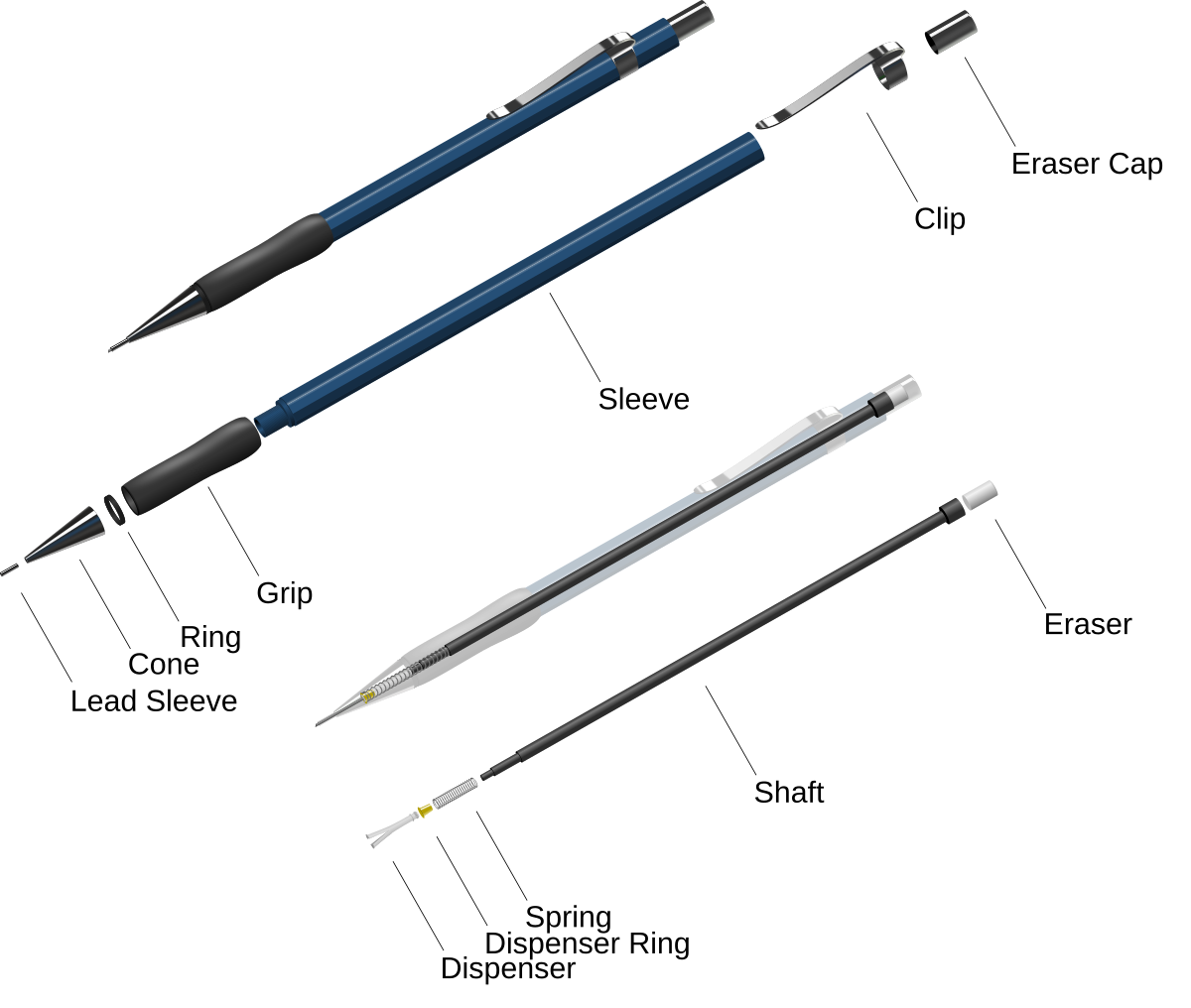
Colored Pencils
Colored pencils bring vibrancy and versatility to sketchbook pages. They’re excellent for layering, blending, and building up rich color without the mess of wet media. Artists can use wax-based or oil-based varieties depending on their preference for softness and blendability. Colored pencils also pair well with ink outlines or graphite underdrawings, allowing for mixed-media exploration. Their portability and minimal setup make them ideal for travel sketching and spontaneous color studies.
Charcoal Sticks and Pencils
Charcoal offers dramatic contrast and expressive mark-making, perfect for capturing mood and movement. Sticks provide bold, sweeping strokes, while charcoal pencils allow for more controlled detail. This medium excels in life drawing, tonal studies, and atmospheric compositions. Though messy, charcoal’s ability to create deep blacks and soft gradients makes it a favorite for artists seeking emotional depth. Fixative spray is recommended to preserve charcoal sketches and prevent smudging.
Conte Crayons
Conte crayons are rich, pigmented drawing tools that combine the density of charcoal with the control of pastel. Often used in figure drawing and tonal studies, they come in earthy tones like sepia, sanguine, and black. Their creamy texture allows for smooth application and subtle blending, especially on textured paper. Conte is ideal for expressive sketches that require both line and mass, and it’s a staple in classical drawing education for its ability to build form and volume.

Ink Pens
Ink pens offer permanence, clarity, and stylistic range in sketchbook work. Fineliners provide crisp, consistent lines for contour drawing and architectural studies. Brush pens allow for dynamic stroke variation, mimicking traditional ink wash techniques. Fountain pens add elegance and fluidity, especially for travel journaling or expressive line work. Ink pens are favored for their ability to define structure, enhance contrast, and layer over pencil or watercolor without bleeding.
Ballpoint Pens
Ballpoint pens are surprisingly versatile for sketching, offering fine control and a wide range of tonal values through pressure variation. Their ink flow allows for subtle shading, cross-hatching, and layering without smudging. Artists often use ballpoint for quick studies, gesture drawing, and even finished illustrations. Because they’re widely available and low-maintenance, ballpoint pens are perfect for spontaneous sketching in everyday environments.
Gel Pens
Gel pens deliver smooth, opaque lines and are available in a wide array of colors, including metallics, neons, and pastels. Their ink dries quickly and works well on both light and dark paper, making them ideal for highlights, accents, and decorative elements. Artists use gel pens to add detail, contrast, or text to sketchbook pages, especially in mixed-media compositions. Their precision and pop make them a fun and functional addition to any sketching toolkit.

Sketchbooks.org | VISUAL RESEARCH HUB
Artist Ink Pens
Visual research is critical for any creative endeavor. We have compiled specialized links to lead you directly to images, videos, and inspiration for "Artist Ink Pens" across the web's best visual search platforms.
Erasers and Sharpeners
Precision and correction tools help refine your sketches.
Kneaded Erasers
Kneaded erasers are soft, pliable tools that can be shaped to lift graphite, charcoal, and pastel without damaging the paper. Their moldable nature makes them perfect for precision work—like pulling highlights from shaded areas or cleaning up delicate lines. Unlike traditional erasers, they don’t leave crumbs and can be “refreshed” by stretching and folding. Artists often use them to lighten values gradually, making them ideal for tonal transitions and subtle corrections.

Vinyl Erasers
Vinyl erasers are firm, clean-cutting tools designed for detailed corrections and crisp edge work. Their dense texture allows for controlled erasing without smudging surrounding areas, making them ideal for refining line art or removing small mistakes. They work especially well on smooth paper and are often shaped into fine points or edges for precision. Because they’re less abrasive than some alternatives, vinyl erasers preserve paper integrity while offering strong erasing power.
Electric Erasers
Electric erasers offer speed and accuracy for lifting pigment in tight or complex areas. Powered by a small motor, they rotate a soft eraser tip that can be guided with pinpoint control—perfect for creating highlights in hair, eyes, or reflective surfaces. They’re especially useful in graphite and charcoal work where subtle light effects are needed. Though bulkier than manual tools, electric erasers are a favorite among illustrators and realism-focused artists for their efficiency and finesse.
Handheld Sharpeners
Handheld sharpeners are essential for maintaining the point and usability of traditional pencils. Available in single or dual-hole designs, they accommodate various pencil sizes and shapes. A good sharpener ensures clean, splinter-free tips that enhance line control and reduce breakage. Compact and portable, they’re a staple in every sketching kit—whether you’re working in the studio or sketching on location. Some models include shavings containers for mess-free use.
Sandpaper Blocks
Sandpaper blocks are versatile tools used to refine and shape drawing implements manually. Artists use them to sharpen charcoal, pastel sticks, or graphite to custom points for detailed work. They also help flatten or bevel edges for broader strokes and texture effects. Beyond sharpening, sandpaper blocks can clean blending stumps or create powdered pigment for smudging. Lightweight and reusable, they’re a practical addition for artists who value control and customization in their mark-making tools.
Sketchbooks.org | VISUAL RESEARCH HUB
Artist Erasers
Visual research is critical for any creative endeavor. We have compiled specialized links to lead you directly to images, videos, and inspiration for "Artist Erasers" across the web's best visual search platforms.
Wet Media for Sketchbook Exploration
Paints and Inks
Adding fluid media brings depth, texture, and spontaneity to your pages.
Watercolors
Watercolors are beloved for their transparency, fluidity, and portability. Available in pans, tubes, or travel sets, they allow artists to build luminous layers and soft gradients with minimal setup. Watercolors pair beautifully with ink or pencil and are ideal for sketchbooks with cold-pressed or mixed-media paper. Their ability to capture light, atmosphere, and subtle transitions makes them perfect for landscapes, portraits, and spontaneous studies.
Gouache
Gouache is an opaque, matte paint that offers bold color coverage and smooth blending. Unlike watercolor, it can be layered without transparency, making it ideal for graphic compositions, flat color blocks, and stylized illustrations. Gouache reactivates with water, allowing for touch-ups and reworking. It performs best on heavyweight paper and is often used in combination with ink or colored pencil for mixed-media sketchbook spreads.

Acrylics
Acrylics are fast-drying, vibrant paints that adhere well to a variety of surfaces, making them excellent for mixed-media sketchbook pages. Their versatility allows for both thin washes and thick impasto textures. Acrylics are permanent once dry and can be layered without disturbing underlying paint. Artists often use them with gesso-primed pages or integrate them with collage, ink, and texture tools for dynamic results.
Ink Washes
Ink washes are created by diluting ink with water to produce tonal gradients and expressive backgrounds. They offer a fluid alternative to watercolor and are especially effective for mood studies, shadow mapping, and gestural sketches. Artists use ink washes to unify compositions or add atmosphere behind line work. Waterproof inks can be layered with other media, while water-soluble inks allow for soft blending and reactivation.
India Ink
India ink is a deep black, permanent ink known for its dramatic contrast and bold line quality. It’s ideal for contour drawing, silhouette work, and expressive mark-making. Applied with dip pens, brushes, or even sticks, India ink dries quickly and resists fading. Artists often use it to anchor compositions, add graphic impact, or create high-contrast studies. It pairs well with watercolor, gouache, and collage for layered sketchbook pages.

Alcohol Inks
Alcohol inks are vibrant, fluid pigments that react unpredictably on non-porous surfaces like Yupo paper or acetate. They spread and blend in organic patterns, making them ideal for abstract backgrounds, texture exploration, and experimental sketchbook work. Because they dry quickly and resist water, alcohol inks are best used with synthetic paper or sealed surfaces. Artists often combine them with line work, stencils, or metallic accents for striking visual effects.
Brushes and Tools
Control your wet media with the right applicators.
Water Brushes
Water brushes are self-contained tools that combine a brush tip with a refillable water reservoir, making them perfect for travel sketching and on-the-go painting. They eliminate the need for a separate water cup, allowing artists to blend watercolors, ink washes, or gouache with ease. Available in various tip shapes, water brushes are especially useful for layering, soft gradients, and quick tonal transitions in sketchbooks with minimal setup.
Round Brushes
Round brushes are the most versatile brush type, ideal for both detailed line work and fluid washes. Their tapered tips allow for controlled strokes, while the belly of the brush holds enough pigment for broader applications. Artists use round brushes for everything from botanical studies to expressive ink drawings. They’re a staple in watercolor kits and perform well with gouache and ink on textured sketchbook paper.
Flat Brushes
Flat brushes feature a straight edge and wide bristles, making them perfect for covering large areas, creating sharp lines, and building geometric compositions. They’re commonly used in acrylic and gouache work to lay down bold color blocks or create architectural forms. Artists also use flat brushes for dry brushing techniques and layered backgrounds, especially when working across double-page spreads in mixed-media sketchbooks.
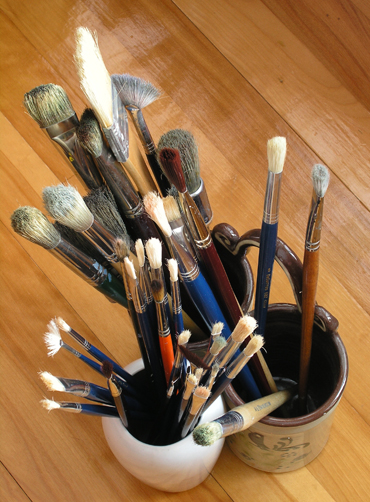
Fan Brushes
Fan brushes are designed for texture and blending, with bristles spread out in a fan shape that creates soft, feathery effects. They’re excellent for painting foliage, hair, or atmospheric elements like clouds and mist. Artists use fan brushes to diffuse edges, blend layers, or add organic movement to compositions. In sketchbooks, they’re especially effective for adding subtle texture without overpowering the page.
Palette Knives
Palette knives are rigid tools used to apply, scrape, or sculpt paint—particularly acrylics and heavy-bodied media. They allow artists to build texture, create sharp edges, or mix colors directly on the page. In sketchbooks, palette knives are often used for experimental layering, collage integration, or impasto effects. Their ability to manipulate paint without bristles makes them a bold alternative to traditional brushes.
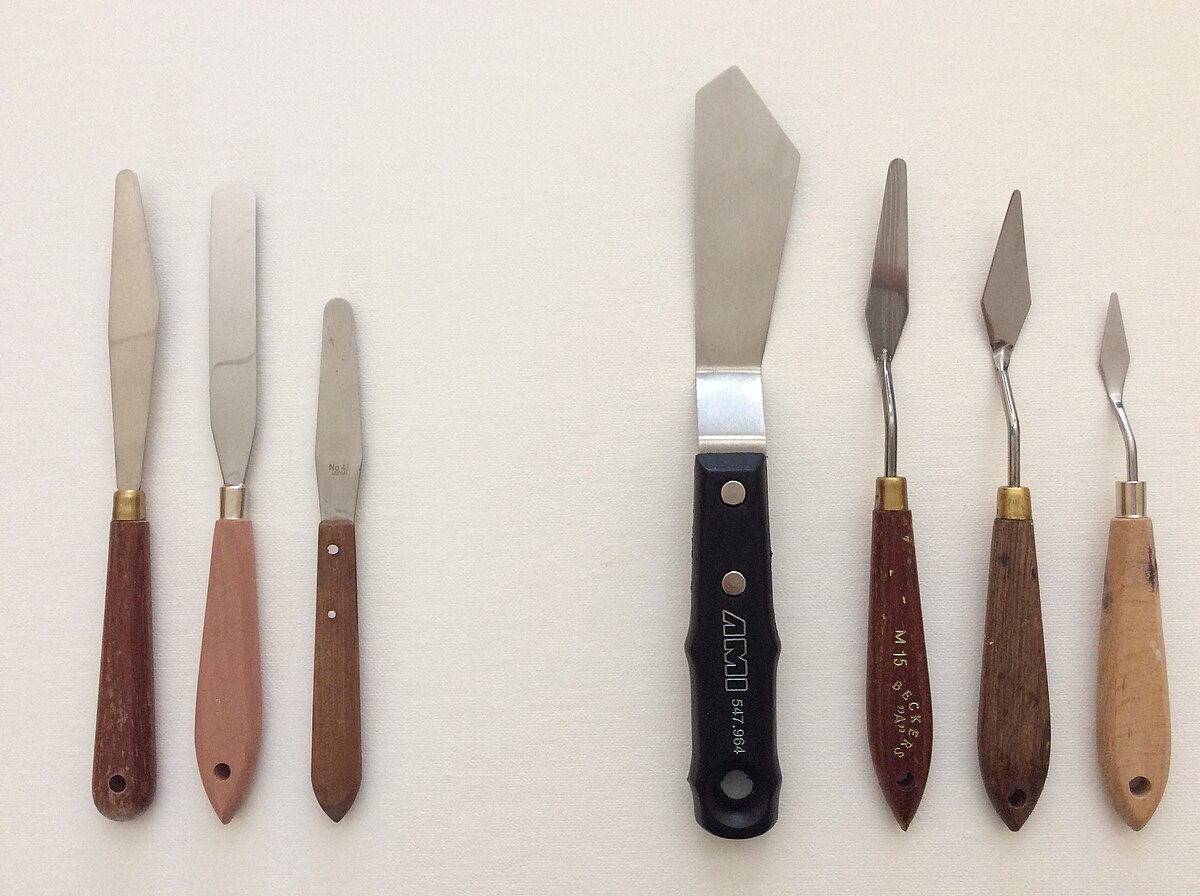
Sponges and Rags
Sponges and rags offer organic, unpredictable texture and are useful for blotting, lifting, or softening wet media. Natural sea sponges create mottled effects, while synthetic sponges can be cut into shapes for stamping or pattern work. Rags are ideal for wiping excess pigment, blending backgrounds, or cleaning tools mid-session. These materials add a tactile dimension to sketchbook pages and encourage spontaneous mark-making.
Sketchbooks.org | VISUAL RESEARCH HUB
Artist Brushes
Visual research is critical for any creative endeavor. We have compiled specialized links to lead you directly to images, videos, and inspiration for "Artist Brushes" across the web's best visual search platforms.
Collage and Mixed-Media Additions
Adhesives and Cutting Tools
Collage adds dimension and storytelling to your sketchbook.
Glue Sticks
Glue sticks are a staple for paper-to-paper adhesion, offering a clean, quick-drying solution that’s perfect for sketchbook collage. Their smooth application and low moisture content prevent warping or wrinkling, making them ideal for magazine clippings, printed text, and lightweight ephemera. Artists appreciate their portability and ease of use—especially when working on location or layering multiple elements in a single session.
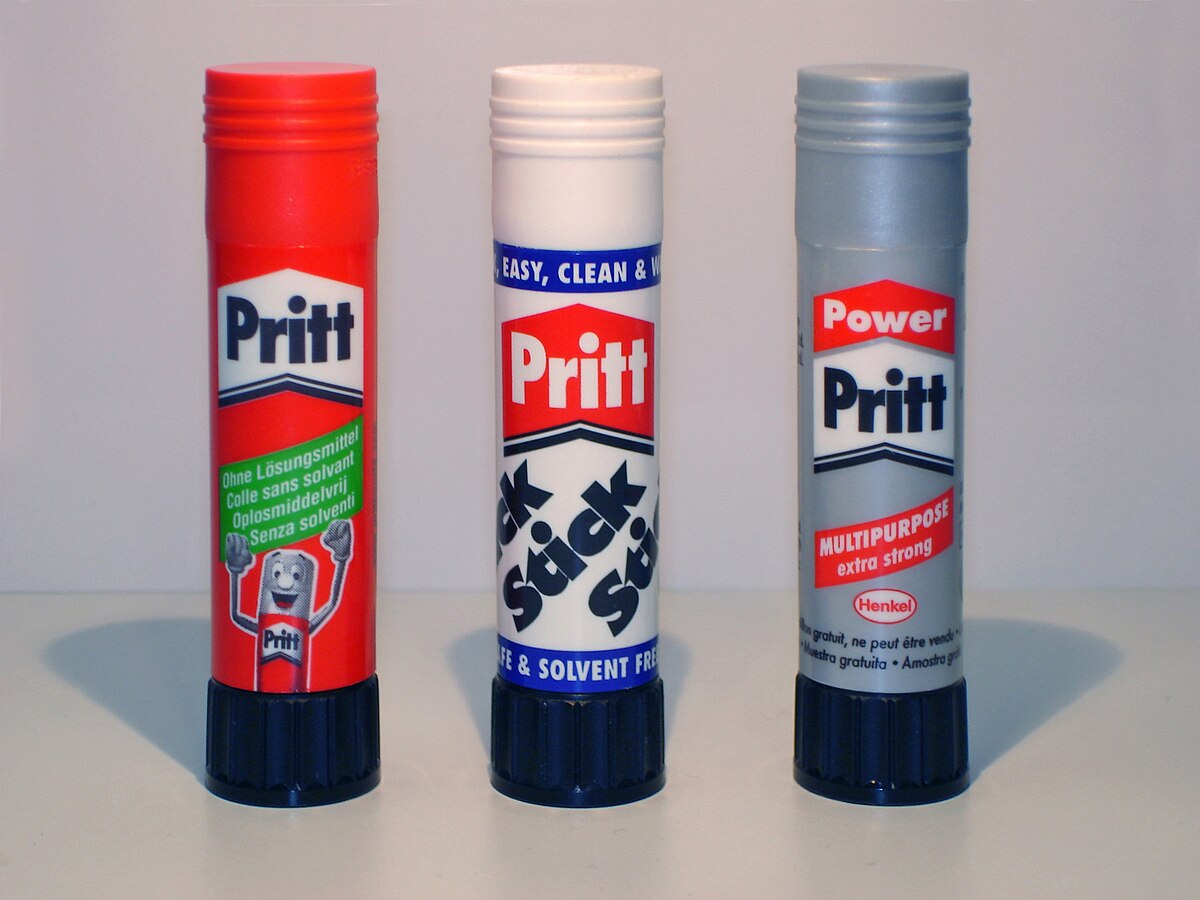
Matte Gel Medium
Matte gel medium is a professional-grade adhesive that provides strong, flexible bonding for heavier materials like fabric, cardboard, or textured paper. It dries clear with a matte finish, allowing artists to layer without glare or gloss. Beyond adhesion, it can be used as a sealant or extender for acrylic paint, making it a versatile tool in mixed-media sketchbooks. Apply with a brush or palette knife for controlled coverage and smooth integration.
Double-Sided Tape
Double-sided tape offers precise, mess-free adhesion for clean collage layouts and layered compositions. It’s especially useful for mounting photographs, framing elements, or attaching delicate materials without visible glue marks. Artists often use it to create crisp borders or secure inserts like fold-outs and flaps. Acid-free varieties are recommended for archival quality and long-term preservation.
Craft Knives
Craft knives are essential for intricate cuts, custom shapes, and detailed layering in collage work. With a sharp, replaceable blade and ergonomic grip, they allow artists to isolate specific imagery or trim complex silhouettes with precision. Use alongside a cutting mat to protect surfaces and ensure clean edges. Craft knives are particularly valuable when working with thick paper, cardboard, or layered textures that scissors can’t handle.
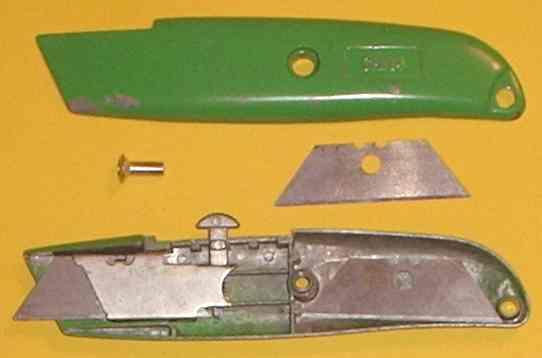
Scissors
Scissors are the go-to tool for trimming clippings, fabric swatches, and general collage elements. A sharp, comfortable pair makes quick work of straight cuts, curves, and repetitive trimming. Artists often keep multiple sizes—small detail scissors for tight areas and larger shears for bulk cutting. Whether you’re shaping magazine fragments or refining torn edges, scissors offer control and speed in every sketchbook session.
Collage Elements
Expand your visual vocabulary with found and recycled materials.
Magazine Clippings
Magazine clippings offer bold imagery, vibrant color, and dynamic typography that can instantly energize a sketchbook page. Artists often use fashion spreads, editorial layouts, or abstract textures to build visual contrast and thematic layers. These clippings are ideal for creating mood boards, framing sketches, or adding surreal juxtapositions. Glossy paper also pairs well with matte drawing surfaces, enhancing depth and visual tension.
Newspaper Scraps
Newspaper scraps bring a raw, narrative quality to collage work. Their muted tones and grainy textures contrast beautifully with ink or watercolor, while headlines and columns add a sense of time and place. Artists use them to evoke memory, document current events, or build layered backgrounds. Torn edges and faded print contribute to a vintage aesthetic that complements both abstract and figurative sketches.

Fabric Swatches
Fabric swatches introduce tactile richness and color variation to sketchbook compositions. Whether it’s cotton, linen, or patterned textiles, fabric can be stitched, glued, or layered to create dimensional effects. Artists often use fabric to echo themes—like nature, fashion, or emotion—or to soften the visual impact of bold media. Lightweight materials work best to avoid warping pages, and frayed edges can add expressive texture.
Washi Tape
Washi tape is both decorative and functional, offering clean lines, repeatable patterns, and easy repositioning. Available in countless designs—from florals to geometrics—it’s perfect for framing sketches, dividing sections, or adding playful accents. Artists use washi tape to build rhythm across pages, reinforce color palettes, or mask areas for painting. Its low-tack adhesive makes it ideal for sketchbooks, leaving no residue behind.
Old Artwork
Repurposing old artwork is a sustainable and creatively liberating way to evolve your sketchbook. Cut-up sketches, paintings, or test swatches can be reimagined as collage layers, borders, or focal points. This approach allows artists to revisit past ideas, build on unfinished pieces, or create visual dialogue between old and new. It’s especially effective for mixed-media spreads where texture and history enhance storytelling.
Photographs
Photographs—whether personal snapshots or vintage prints—add emotional depth and realism to sketchbook pages. They can serve as reference material, compositional anchors, or symbolic elements within a collage. Artists often pair photos with handwritten notes, sketches, or paint overlays to create layered narratives. Black-and-white prints offer contrast, while color photos can reinforce mood or theme.
Pressed Leaves or Flowers
Pressed botanical elements bring organic texture, natural color, and seasonal context to sketchbook work. Leaves, petals, and stems can be glued directly onto pages or embedded in transparent layers. Artists use them to complement nature studies, evoke memory, or add softness to graphic compositions. Because they’re fragile, sealing with matte medium or placing under acetate can help preserve their integrity.
Writing and Annotation Tools
Adding text enhances storytelling and context.
Fine-Tip Markers
Fine-tip markers are ideal for adding notes, captions, outlines, and structural details to sketchbook pages. Their consistent ink flow and precision tips make them perfect for clean line work, especially when annotating diagrams or reinforcing pencil sketches. Available in waterproof and archival varieties, they’re often used alongside watercolor or collage without smudging. Artists rely on fine-tip markers to maintain clarity and enhance visual storytelling.
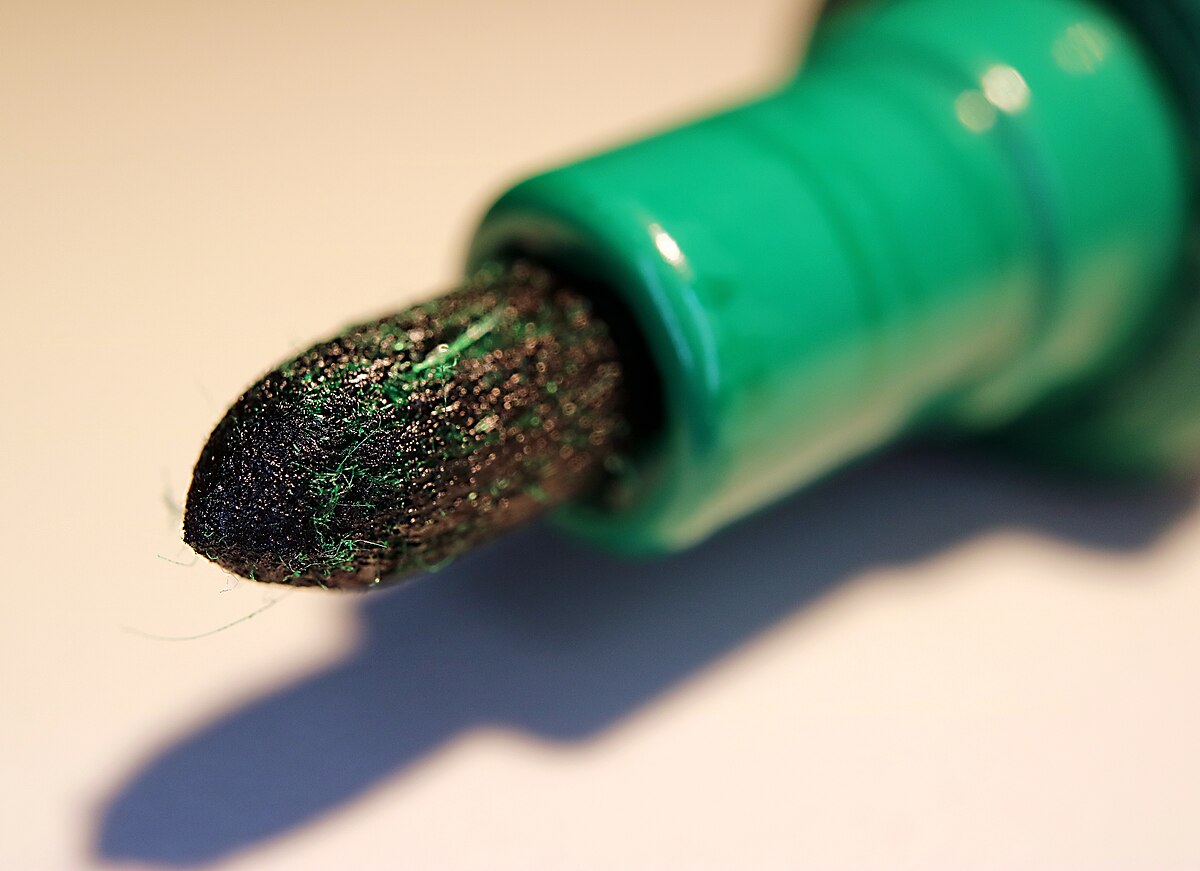
Brush Pens
Brush pens offer expressive, variable strokes that mimic traditional brushwork with the convenience of a pen. Their flexible tips allow for dynamic line weight, making them excellent for lettering, emphasis, and gestural drawing. Artists use brush pens to add rhythm and movement to sketchbook pages, especially in mixed-media spreads or illustrated journaling. They’re available in water-based and pigment-based options, depending on the desired permanence and blendability.
Calligraphy Pens
Calligraphy pens bring elegance and structure to sketchbook layouts, especially when used for headers, titles, or decorative text. With chisel or flex nibs, they create thick-and-thin strokes that add visual hierarchy and style. Artists often use calligraphy pens to frame compositions, label sections, or incorporate poetic elements. Whether traditional dip pens or modern cartridges, they add a refined touch to both personal and professional sketchbooks.
Gel Pens
Gel pens provide smooth, opaque lines and come in a wide range of colors, including metallics, neons, and pastels. Their ink dries quickly and performs well on both light and dark paper, making them ideal for embellishments, highlights, and fine detail. Artists use gel pens to add contrast, texture, or playful accents to sketchbook pages. Their versatility and ease of use make them a favorite for spontaneous mark-making and layered compositions.
White Pens
White pens are essential for highlighting on toned or dark paper, allowing artists to add light accents, reflections, or textural contrast. They’re especially effective in sketchbooks with gray, kraft, or black pages, where traditional media may not show up. Artists use white pens to define edges, illuminate focal points, or balance compositions with subtle brightness. Look for opaque, archival-quality ink to ensure lasting impact.
Stamps and Stencils
Stamps and stencils offer repeatable patterns, shapes, and text blocks that add structure and rhythm to sketchbook spreads. Artists use them to create borders, backgrounds, or thematic motifs with consistent results. Stencils are great for layering paint, ink, or pencil, while stamps can be customized with different colors and textures. These tools are especially useful in collage, journaling, and mixed-media work where repetition and design play a key role.
Optional Enhancements and Accessories
Organization and Portability
Keep your materials accessible and protected.
Pencil Cases or Roll-Ups
Pencil cases and roll-ups are essential for organizing sketching tools on the go. Roll-ups offer individual slots for pencils, pens, and brushes, making it easy to see and access each item. Zippered cases provide compact storage and often include mesh pockets or elastic loops for added versatility. Whether you’re sketching in a café or hiking with your sketchbook, these organizers keep your tools secure, sorted, and ready for action.
Portable Easel or Lap Desk
A portable easel or lap desk allows artists to sketch comfortably anywhere—indoors or outdoors. Easels offer adjustable angles for better posture and control, while lap desks provide a stable surface for drawing in transit or on uneven terrain. Lightweight and foldable models are ideal for travel, and some include built-in storage or clipboards. These tools help maintain focus and ergonomics during longer sketching sessions.
Binder Clips
Binder clips are a simple but powerful addition to any sketchbook kit. They hold pages flat while working, especially in spiral-bound or hardcover sketchbooks that resist staying open. Artists use them to secure loose sheets, attach reference images, or prevent wind from flipping pages during outdoor sketching. Available in various sizes, binder clips are also handy for organizing clippings or creating temporary page dividers.

Plastic Sleeves or Pockets
Plastic sleeves and adhesive pockets are perfect for storing clippings, ephemera, and small collage elements inside your sketchbook. They protect fragile materials from damage and keep your workspace tidy. Artists often use them to collect inspiration—like ticket stubs, pressed leaves, or magazine fragments—until they’re ready to incorporate them into a page. Clear sleeves also allow for easy viewing and organization without compromising the sketchbook’s layout.
Sketchbook Pouch or Tote
A sketchbook pouch or tote is designed to carry your entire kit with ease, whether you’re commuting, traveling, or attending a workshop. Look for options with compartments for sketchbooks, tools, and accessories, plus padding to protect delicate items. Some artists prefer minimalist pouches that slip into larger bags, while others opt for dedicated totes with shoulder straps and waterproof lining. A well-designed carry solution ensures your creative practice stays mobile and organized.
Surface Prep and Protection
Maintain your sketchbook’s longevity and presentation.
Fixative Spray
Fixative spray is essential for preserving dry media like graphite, charcoal, and pastel. It prevents smudging and fading by creating a thin, invisible layer over your artwork. Available in workable and final versions, fixatives allow artists to continue layering or seal a finished piece. Always spray in a well-ventilated area and test on a sample page first to avoid unexpected changes in tone or texture.

UV-Resistant Varnish
UV-resistant varnish protects mixed-media sketchbook pages from light damage and color fading over time. Especially useful for pieces that include watercolor, ink, or collage, this clear coating enhances longevity and vibrancy. Choose between matte, satin, or gloss finishes depending on your aesthetic preference. While not always necessary for sketchbooks kept closed, varnish is ideal for pages intended for display or scanning.

Masking Tape
Masking tape is a versatile tool for creating clean edges, blocking off areas, or securing paper while painting. It’s commonly used in watercolor and acrylic work to define borders or preserve white space. Low-tack varieties are best for sketchbooks, as they lift easily without tearing the paper. Artists also use masking tape to create geometric designs or layered effects in mixed-media compositions.
Gesso
Gesso is a primer that prepares sketchbook pages for acrylic, oil, or collage work by adding texture and sealing the surface. It prevents paint from soaking into the paper and improves adhesion, especially on non-absorbent or thin pages. Available in white, clear, or tinted versions, gesso can be applied with a brush or palette knife. Artists often use it to customize sketchbook surfaces or reclaim pages for reuse.
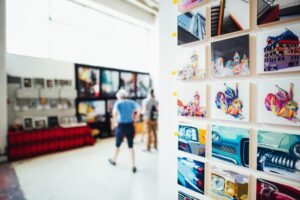
Sketchbooks.org | ARTIST MARKETING GUIDE
Effective Marketing Strategies for Selling Art Locally | That Actually Work
Know Your Local Art Ecosystem Unlocking effective marketing strategies for selling art locally can transform your creative practice from isolated studio work into a thriving, community-based business. While the internet has its perks, local sales...
Frequently Asked Questions
What type of sketchbook should I use?
Choose based on your preferred media—mixed-media sketchbooks are versatile for most styles.
Can I use wet media in any sketchbook?
Only if the paper is thick enough; watercolor or mixed-media paper is best for wet applications.
What’s the best pencil for sketching?
Graphite pencils in the 2B–6B range offer good softness and shading control.
Are gel pens good for sketchbooks?
Yes, they flow smoothly and come in vibrant colors, great for detail and annotation.
How do I keep my sketchbook pages from smudging?
Use fixative spray or interleave pages with tracing paper.
Can I use collage in a regular sketchbook?
Yes, but make sure the binding and paper can handle added weight and glue.
What’s the difference between gouache and watercolor?
Gouache is opaque and matte; watercolor is transparent and fluid.
Should I date my sketchbook pages?
Absolutely—it helps track progress and organize your creative journey.
Is it okay to mix media on one page?
Yes, combining media can lead to exciting textures and visual depth.
How do I travel with my sketchbook kit?
Use a compact pouch with essentials—keep it lightweight and organized.
Final Thoughts
Your sketchbook is a living archive of your creativity, and the materials you choose shape every page. From graphite to gouache, collage to calligraphy, this guide offers a comprehensive toolkit to support your artistic evolution. Whether you’re sketching daily life, experimenting with mixed media, or building a portfolio, the right materials empower you to explore, express, and grow. Let your sketchbook reflect your curiosity, your style, and your voice—and keep adding to it, one mark at a time.
Ready to Share Your Work?
